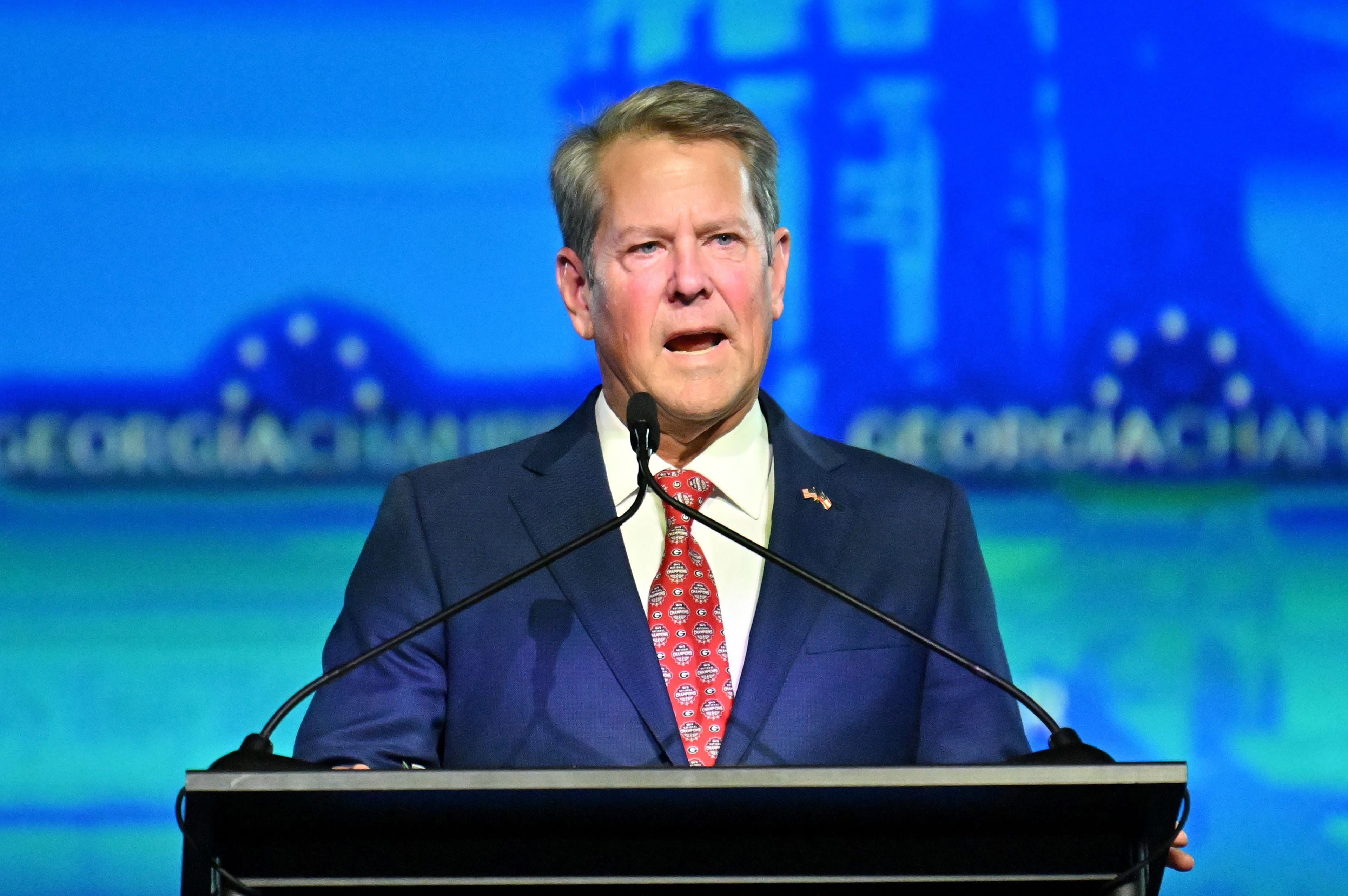Shifting South: Why Alabama is Trump’s red-state constant

They’re mad at the stagnant economy, decaying infrastructure and deepening divide between the wealthy and the poor. And on a recent stormy night, the frustrated and furious in this central Alabama town of 1,250 made sure the local political elite heard them.
“I want to get more for my two small kids,” said Daniel Sims, a fencing contractor and one of several fed-up residents challenging the incumbent mayor. “I don’t buy the excuses. It just seems we’re just settling, and I feel like we need more.”
Even in speck-on-the-map towns such as West Blocton, anyone with a scarlet “I” for incumbent next to their name is feeling defensive. And in Alabama, about the least likely state in the nation to flip to Hillary Clinton’s camp, the anti-establishment fervor and a local GOP hierarchy rocked by scandal is cementing Donald Trump’s rise.
There are no Democrats in top offices here to give heart to partisans like there are in Louisiana and Mississippi, where the party has kept a toehold. And the sweeping demographic changes that brought an influx of newcomers and minority voters to North Carolina and Georgia has hardly touched Alabama.
But if Alabama is the example of how conservatives can consolidate their power, it also shows the danger of an entrenched and sometimes-stagnant party, a lesson for a neighboring state where Republicans are trying to hold onto power amid a growing number of African-American and Hispanic voters.
A red-state constant
It’s hard to even tell there’s an election nearing in parts of Alabama. Signs for presidential candidates and incumbent Republican U.S. Sen. Richard Shelby, who is seeking another term in November, are few and far between, even in denser pockets of suburban Birmingham and Tuscaloosa.
How red is Alabama? Richard Fording, a University of Alabama political scientist, can’t find internships for his students because there are few campaign operations to hire them. And he can’t find many reliable recent polls of Alabama voters because most polling firms have skipped the state.
“Despite the fact that black voters comprise roughly a quarter of the electorate in Alabama, Trump will likely win by more than 20 points,” Fording said. “This means that at least 75 percent of white voters will vote for Trump.”
For a state that hasn’t voted for a Democrat for president since 1976, there are few signs of a Democratic insurgency on the rise — though incumbent Republicans will continue to see challenges from reformist GOP candidates.
Some Republicans are distancing themselves from Alabama Gov. Robert Bentley, whose troubled second term has been clouded by the threat of impeachment, allegations of an affair with a former top aide and a tumultuous new fight over an education lottery. Yet even many Republicans disgusted with Bentley’s tenure see the party, and its standard-bearer Donald Trump, as their only option.
“He’s rough around the edges, but he’s brutally honest,” said Melissa Moore Truell, an educator who lives in central Alabama. “And the direction we’re headed in, we need brutal honesty more than ever. Sometimes you have to choose the lesser of two evils. You have to pick a side.”
For Republicans looking to the next few election cycles, the demographic trends in Alabama look encouraging. The state isn’t seeing the level of in-migration from outside the state that is slowly transforming Georgia, North Carolina and South Carolina. It has more non-Hispanic white voters than its neighbors. And it has fewer residents with college diplomas than Georgia.
While Republicans in Georgia have been under pressure, at least in some suburban districts, to moderate their message to appeal to a more highly educated and diverse bloc of voters, the same external factors have been largely absent in Alabama. White voters who lack college degrees make up one of Trump’s strongest bases of support.
“Georgia might have to have its Deep South membership revoked, with 28 percent of its population now having at least some college education — compared to 23 percent in Alabama,” said Fording, who said the higher education levels are quickly becoming a dividing line in this year’s election.
A river’s divide
If Democrats in Alabama are ever going to make a comeback, it would start in a town like Tuscaloosa, about 60 miles west of Birmingham. The college town is a blue island in a sea of deep red, and Democrats here are trying to build on local election successes headlined by the victories of a long-serving Democratic county probate judge.
But there’s a sense of resignation among even the most ardent local Democratic activists. Denise Downs often spends lonely afternoons in the party’s cramped local office that’s attached to a run-down apartment complex on the edge of town.
“It’s pretty quiet down here. The Republicans have taken over everything, and the party is gaining no traction statewide,” Downs said. “The Republican Party is so tied to religion down here, and on the Democratic side it’s black churches. It’s church against church instead of who has the best ideas.”
She sees a tiny glimmer of hope in the relative dearth of Trump signs around town. “But then again,” she added, “in a state like this there is no reason for him to spend the money here.”
That tide is perhaps reddest across the Black Warrior River, where voters in the suburban enclave of Northport are about as conservative as they get. It’s where Larry Montgomery, a 67-year-old retiree, has lived most of his life. Bentley, the state’s beleaguered governor, was once his dermatologist, and Montgomery’s been a solidly Republican voter for years.
“I came up with a philosophy — don’t re-elect anybody. That’s how I’m feeling, pretty much,” Montgomery said. But that only extends so far. He’s likely to support Shelby, who lives across the river in Tuscaloosa. And don’t dare ask him if he’ll back Clinton in November.
“I’m not 100 percent comfortable with Trump, but I don’t like Hillary at all. I’d vote for anybody walking any street in the United States other than her,” he said with a sigh. “Everybody wants change. We are all tired of promises.”
‘Bridge the divide’
That sentiment sums up the mood in West Blocton, a town about 40 miles east of Tuscaloosa that once dreamed of rivaling Birmingham. The remains of coke ovens preserved in a nearby park serve as a reminder of the city’s vibrant past. Today, its downtown is derelict, a main street of boarded-up buildings and abandoned businesses.
At a town hall meeting, many voters lashed out at their local officials. Cathy Cutts, a nurse who has lived here for more than 50 years, pressed each of the town’s mayoral candidates to get to the point: Why are you running for office? And what will you actually do to bring West Blocton together?
It’s the latter question that most frustrates her. A deep chasm remains between the white community and the African-Americans in town, and she has little hope the town can ever unite.
“I don’t see it ever changing,” she said. “The older voters are dying out and they’ve raised their children to have the same thoughts. The racism isn’t everywhere. But it’s hard — really hard — in this community to bridge the divide.”
And yet, Cutts is considering running for local office one day. Probably as an independent.
“What I’ve learned is we can’t live on this earth and remain separated forever,” she said.
Alabama
Electoral votes: 9
Population*
4,858,979
Population change since 2010: 1.6 percent
*Estimated, July 1, 2015
Race and Hispanic origin
Non-Hispanic white: 66.0 percent
Black: 26.8 percent
Hispanic: 4.2 percent
Education**
High school degree or higher: 83.7 percent
Bachelor’s degree or higher: 23.1 percent
** For people 25 or older
Economy
Real median household income, 2014: $42,278
Per-capita income, 2015: $38,965
Unemployment rate, July: 5.8 percent
Poverty rate: 19.3 percent
Congressional delegation
U.S. Sen. Jeff Sessions, Republican, took office in 1997
U.S. Sen. Richard Shelby, Republican, took office in 1987
U.S. Rep. Robert Aderholt, Republican, took office in 1997
U.S. Rep. Mo Brooks, Republican, took office in 2011
U.S. Rep. Bradley Byrne, Republican, took office in 2014
U.S. Rep. Gary Palmer, Republican, took office in 2015
U.S. Rep. Martha Roby, Republican, took office in 2011
U.S. Rep. Mike Rogers, Republican, took office in 2003
U.S. Rep. Terri Sewell, Democrat, took office in 2011
Governor
Robert Bentley, Republican, took office in 2011
Four of Alabama’s past six governors, going back to 1987, have been Republicans.
State Legislature
In 2010, Republicans gained control of both chambers of the state Legislature for the first time since 1874.
Recent presidential voting history
2012
Mitt Romney, Republican: 60.6 percent
Barack Obama, Democrat: 38.4 percent
2008
John McCain, Republican: 60.3 percent
Barack Obama, Democrat: 38.7 percent
2004
George W. Bush, Republican: 62.5 percent
John Kerry, Democrat: 36.8 percent
2000
George W. Bush, Republican: 56.5 percent
Al Gore, Democrat: 41.6 percent
1996
Robert Dole, Republican: 50.1 percent
Bill Clinton, 43.2 percent
The state last voted for a Democratic presidential candidate in 1976.
2016 presidential primary
Democratic winner: Hillary Clinton, with 77.9 percent of the vote
Republican winner: Donald Trump, with 43.4 percent of the vote
Sources: U.S. Census Bureau, 270towin.com, Ballotpedia, govtrack.us, U.S. Federal Reserve, www.archives.alabama.gov/
Shifting South
This is the second installment of a weekly series by The Atlanta Journal-Constitution on the political currents that define our region. Today’s story, by Greg Bluestein, probes the presidential race in Alabama ahead of the November election. Future pieces will look at Georgia’s other neighbors.
57 days until vote
Monday marks 57 days until Americans vote in federal and state races on Nov. 8. All year, The Atlanta Journal-Constitution has brought you the key moments in those races, and it will continue to cover the campaign’s main events, examine the issues and analyze candidates’ finance reports until the last ballot is counted. You can follow the developments on the AJC’s politics page at https://www.ajc.com/politics/ and in the Political Insider blog at https://www.ajc.com/politics/politics-blog/. You can also track our coverage on Twitter at https://twitter.com/GAPoliticsNews or Facebook at https://www.facebook.com/AJCGaPolitics.
Shifting South: Explore the series
Why the South is anything but solid for either Clinton or Trump
Why Alabama is Trump’s red-state constant
Changing demographics drive Virginia’s purple reboot
In South Carolina, Democrats enjoy ever brief moment of parity
A Trump-Clinton battle royale in must-win North Carolina
A Texas-sized Republican rift over Donald Trump
Florida, once again, could play lead role in deciding election



